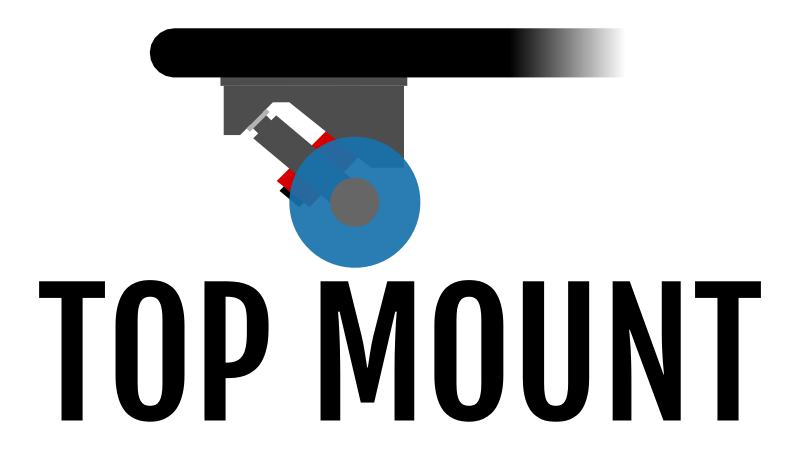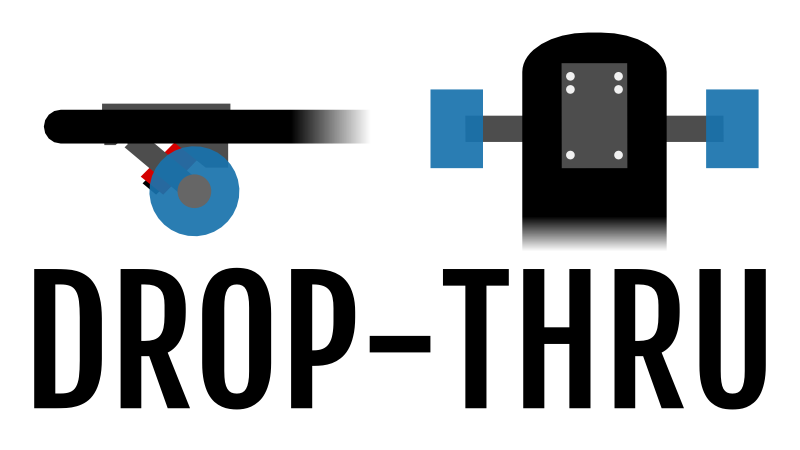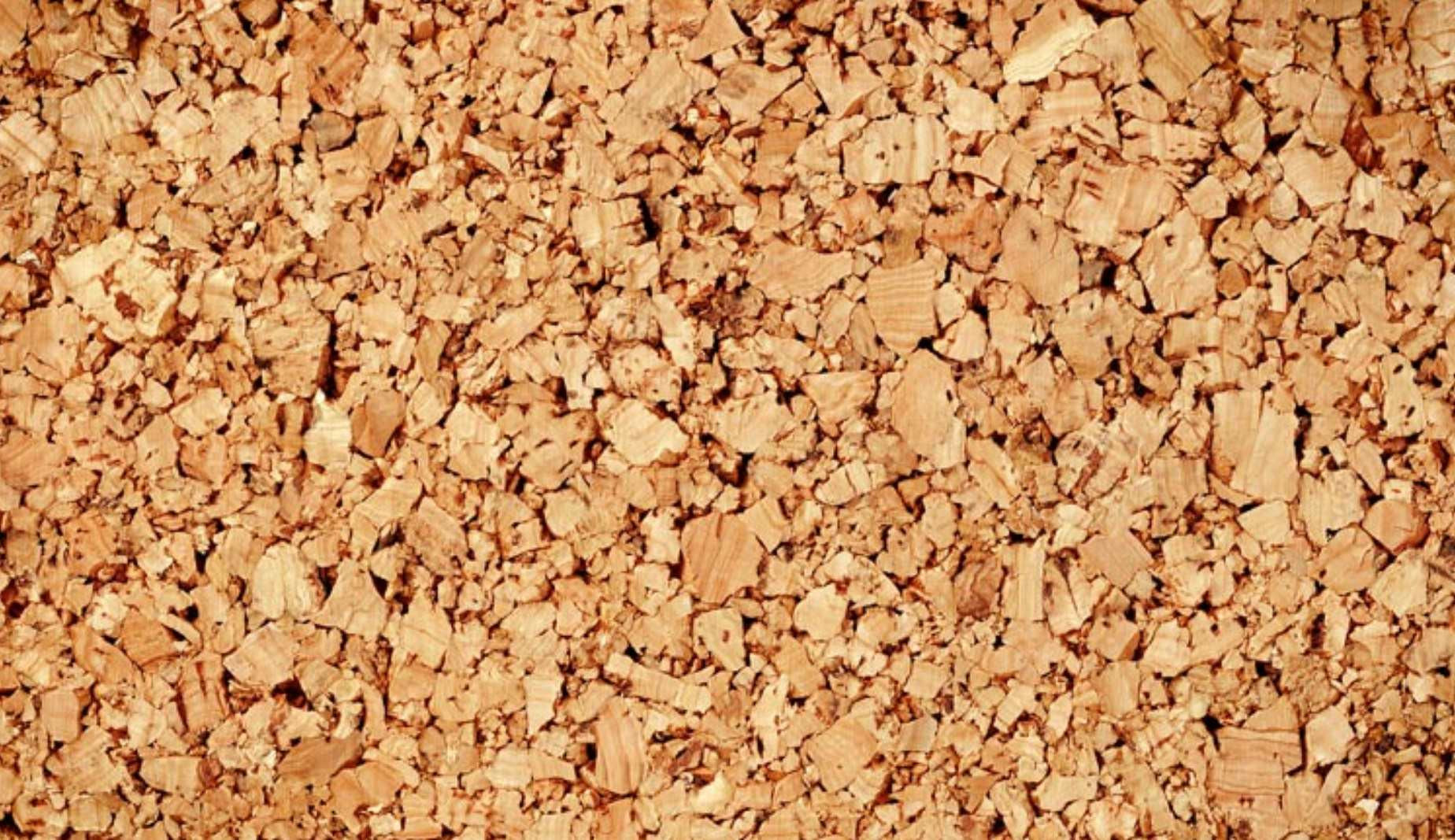Longboards come in all kinds of shapes, sizes, designs, models, etc etc. When reading about various deck types and deck features, it can be hard to wrap your head around what those features can actually do for you as a rider. In this Tech Article, we try to cover all of the different deck shapes and features.
Anatomy of a Longboard
The following is a list of longboard deck features. Every single longboard deck is going to have these basic features, regardless of brand or type of board. These are as follows.

Nose - The part of the longboard deck that extends out in front of the front truck. The nose of the longboard can come in all kinds of shapes and sizes.
Tail - The part of the longboard deck that extends out behind of the back truck. The tail of the longboard, like the nose, can come in all kinds of shapes and sizes. However, the tail generally comes in more shapes and sizes.
Pan - The part of the longboard deck that extends between the front and rear truck. This is usually the largest area and the area in which a rider stands. The pan of the longboard can have all different kinds of concave and rail features to help the rider control the longboard during various types of skateboarding (keep reading to learn about these features).
Bolt Holes - Bolt holes (or bolt patterns) are where a rider locks down their trucks to the deck with hardware.
Wheelbase (or truckbase) - The part of the longboard deck measured from the most inner truck bolt holes. While this measurement isn't a true WHEELbase measure (a measure from front wheel to rear wheel), differences in truck designs created ambiguity. To create a standard, wheelbases are just measured from the inner most truck bolt holes. Where a rider locks down their trucks determines their "wheelbase" or distance between the front wheels and rear wheels. Often times, performance longboards have multiple bolting locations for trucks, referred to as "wheelbase options". By allowing a rider to change their wheelbase, they can change the way the longboard rides. Generally, a short wheelbase allows for faster turning and a long wheelbase offers more stability. Think of it like this: a go-kart can turn in really fast because the front and rear wheels are close together. A semi-truck turns in slower because the front and rear wheels are further apart. The same type of idea applies to skateboards. Wheelbase can also affect grip. Longer wheelbases tend to have more grip because it is harder to swing the back truck out into a slide. Think of the go-kart / semi-truck example again: which one would be easier to drift?
Effective Foot Platform - The "Effective Foot Platform" (often shortened to EFP) refers specifically to the area in which a rider can effectively use their feet to control the board.
Rails - The rails of the longboard are the edges along the EFP. There are two main types of rails: rounded and sharp. Rounded rails are like those found on a shortboard. They make flip tricks easier and won't break or chip off from the abuse of doing various aerial tricks. Sharp rails are common on performance longboards, freeride boards, and downhill boards. Sharp rails grab are your shoes and keep your feet positioned during hard slides. However, sharp rails are often prone to chipping and wear, especially on the commonly less expensive maple longboards.
Another special form of rails is called Gas Pedals (GPs for short). Gas Pedals are areas along the rails that have been cut flat so that a shoe can have more traction and leverage when stepping directly over the rail. GPs usually come on decks designed for performance freeride.
Real Life Examples of Decks with GPs - Loaded Tesseract, Loaded Basalt Tessaract

More on Wheelbases
Wheelbase should be a top factor in determining which deck you want to buy. The wheelbase of a deck contributes to everything about the board. From the way it turns in to the way it handles speed, wheelbase is incredibly important. This is because the wheelbase determines the overall riding experience. The longer the wheelbase, the bigger the arch it takes to turn a skateboard with the same amount of lean.

In downhill and freeride applications, some people prefer shorter wheelbases for more grip and longer wheelbases for more drift. This is because shorter wheelbases allow the rider to focus more weight directly over the trucks.
Concave Types
Concave on a longboard is perhaps the most important aspect there is. It is the concave that provides the rider the foothold they need to perform at the top of their game. There are six main types of concaves as seen above. These images are slightly exaggerated profiles of skateboard decks from the perspective of looking head on and straight down the length of the board.
Radial - Radial is probably the most common form of concave. If you were to draw a giant circle and then slice part of it out, you could use the small curve you cut for as a template for radial concave.
Progressive - Like Radial, progressive forms a continuous arch. However, progressive concave gets progressively steeper (wow, is that how they named it?) as it extends out from the center of the deck towards the rails.
Convex - Convex is the opposite of concave. Convex is when the board arches up instead of inward. This is the least common type of concave as it allows for minimal leverage over the rails.
Asymmetric - Asymmetric concave is for those who want a different feel during their toeside and heelside turns. Because riders can typically get more leverage over their heelside turns, asymmetric attempts to compensate for all those little toes.
Flat-Cave / Tub - Tub concave (more often heard just "tub") describes a board with a flat center of the pan with the concave starting a set distance before the rails. This keeps feet flatter and in a more natural position, yet still allows for that needed leverage at the toes and heels.
No Concave - We don't have a picture of this guy because no concave is just flat and not hard to imagine. However, no concave is common in longboards, especially pintails and other cruisers, so it is definitely worth mentioning.
Camber and Rocker
Camber and Rocker are opposites of each other.
Real Life Examples - Arbor Prodigy, Landyachtz Chief, Prism Origin V2
Camber - When the pan of the deck is raised up. This usually allows more energy to be stored in the board as the pan will be designed to flex down flat when the rider is standing on it. Like Rocker, Camber can put the rider in a precarious position at high speed. A flexy board tends to be less stable and a stiff board with camber puts the rider above the trucks (high center of gravity). Both of these makes the board susceptible to rider errors and thus speed wobbles.
Real Life Examples - Loaded Icarus, Landyachtz Mummy, DB Coreflex
Kicks and Kicktails
The nose or tail of the skateboard that has been bent upwards to allow for more leverage over the rest of the deck. This feature is commonly known as a kicktail (upturned tail) or kicks (referring to both the nose and the tail). The kicktail or kicks can allow the rider to ollie, manual, etc. This opens the door to a plethora of various other tricks.
Real Life Examples - Moonshine Sidekick, Sector 9 Wedge, Loaded Tesseract
Types of Longboard Truck Mountings
There are several basic types of defining longboard truck mountings. Different mountings change the way the rider puts leverage over the trucks and thus changes the way the rider turns the board. The rider can feel these changes through their feet. The various types of truck mountings are as follows.
Top Mount - Tried and true, a top mount is exactly as it sounds. The trucks mount directly flush to the deck and the deck includes no fancy curvatures to position the trucks. This gives the rider the most leverage over the trucks as a boarder is standing "on top" of the trucks. Skilled downhill guys like this because it's the most responsive and touchy set up. Newer riders might find a board like this too twitchy. Develop your skills and always ride in control.
Real Life Examples - Element Nyjah Dialed, Arbor Highground, Loaded Overland

Drop Thru (Drop Through) - Another timeless favorite, drop-thrus are the quickest and easiest way to position the rider lower to the ground by having the trucks actually mount on the standing platform of the deck. This gives the rider less leverage over the trucks as a boarder doesn't have as much of a lever arm over the truck hanger. Less leverage creates a more stable platform, but less responsiveness.
Real Life Examples - Prism Revel, Loaded Dervish, Moonshine Bootlegger
 Dropped Deck - When a deck is dropped, the trucks still mount as they would on a top mount, but the deck curves to position the standing platform lower to the ground. Dropping a deck lowers the center of gravity without changing the leverage over the trucks. Think top mount style leverage with drop thru ride height.
Dropped Deck - When a deck is dropped, the trucks still mount as they would on a top mount, but the deck curves to position the standing platform lower to the ground. Dropping a deck lowers the center of gravity without changing the leverage over the trucks. Think top mount style leverage with drop thru ride height.
Real Life Examples - DB Paradigm, Landyachtz Switchblade, Arbor Dropcruiser

Flush Mount (aka Drop Through Flush Mount) - Flush mounts are drop throughs specially designed to fit a specific baseplate. The trucks mount inside of the deck. This is less popular to most riders because flush mounts can usually only take one type of truck, greatly limiting variety in set ups. This lands somewhere between top mount and drop thru in terms of over-the-trucks leverage.
Real Life Examples - Moonshine Hooch, Loaded Chubby Unicorn, Sector 9 Jimmy Riha Pro Model
 Drop Mount - Drop mounts come from cut outs in the deck that allow the trucks to mount up inside of the deck, allowing for a slightly lower platform. This is occasionally referred to as "Flush Mount" (yep, same term as above) when the drop mount is cut as such that the truck does not have any rocker when the deck itself does have rocker. The trucks are thus "flush" with the ground with no geometry change due to the rocker from the deck. This lands somewhere a little less than a top mount, but definitely more than a drop thru in terms of over-the-trucks leverage.
Drop Mount - Drop mounts come from cut outs in the deck that allow the trucks to mount up inside of the deck, allowing for a slightly lower platform. This is occasionally referred to as "Flush Mount" (yep, same term as above) when the drop mount is cut as such that the truck does not have any rocker when the deck itself does have rocker. The trucks are thus "flush" with the ground with no geometry change due to the rocker from the deck. This lands somewhere a little less than a top mount, but definitely more than a drop thru in terms of over-the-trucks leverage.

Longboard Deck Construction
Longboards come in all kinds of different types of constructions, from bamboo to carbon fiber. Often times, a variety of materials are used to accomplish different flexes and ride patterns. Here are just some of the different constructions that are out there.
Maple - The most common and often the least expensive. Most commonly layered in plys, maple is strong and stiff. 8 ply and 9ply is most common. It is also fairly common to have a 4ply maple and fiberglass combination to add flex to a deck.

Bamboo - Usually a bit more expensive than maple, bamboo is often marketed as stronger and more renewable. It is also amazing in the sense that it can be extremely rigid is some deck builds (Rayne), but flexy and flowing in others (Loaded). Like maple, it can be combined with fiberglass for added strength.

Birch - A little less common, birch wood can be used in skateboard builds as it can be made into plys easily and is easy to work with. Again, like maple and bamboo, it is easily paired with fiberglass for added strength.

Exotic Longboard Materials
UHMW - Ultra High Molecular Weight (polyethylene) is the same hard plastic material that is commonly used in slide pucks. It acts as a vibration softener, helping to change the natural frequency of the deck. Boards with UHMW are marketed to ride more smoothly and less harshly.
 Cork - A less common material (mostly utilized by Loaded), cork is also supposed to be for vibration damping. It is also impressionable, so decks with cork on their faces can have really awesome details in the graphic.
Cork - A less common material (mostly utilized by Loaded), cork is also supposed to be for vibration damping. It is also impressionable, so decks with cork on their faces can have really awesome details in the graphic.

Urethane - Urethane is sometimes used in boards as bumpers. Material is placed strategically within the skateboard, usually within the nose or tail, to resist damage when a board is crashed. Never Summer (all models), Moonshine (all models), and the Loaded Chubby Unicorn utilize this type of construction.

Fiberglass - Similar to carbon fiber, Fiberglass is considered the more cost effective option. It adds strength to a deck, making breaking points far higher than just plain wood building materials (bamboo/maple/birch). When done correctly, the right amount of Fiberglass over wood materials creates an amazingly fun flex within the skateboard deck. (Think Loaded Boards)

Carbon Fiber - Similar to fiberglass, carbon fiber is used to add rigidity and strength to a deck. Carbon is very light and very strong. Plus, it looks absolutely awesome when skillfully applied and polished. Think Rayne Longboards.

This is by no means a complete list of materials used to build skateboards, but it is definitely a place to get your foot in the door.
Concluding
Longboard decks come in all kinds of shapes and sizes. Choosing which one is right for you often times comes down to just riding a bunch and figuring out what you like best. That's part of the fun. Get stoked.
Questions, comments, concerns? Hit us up at help@stokedrideshop.com. We want to hear what you have to say.








